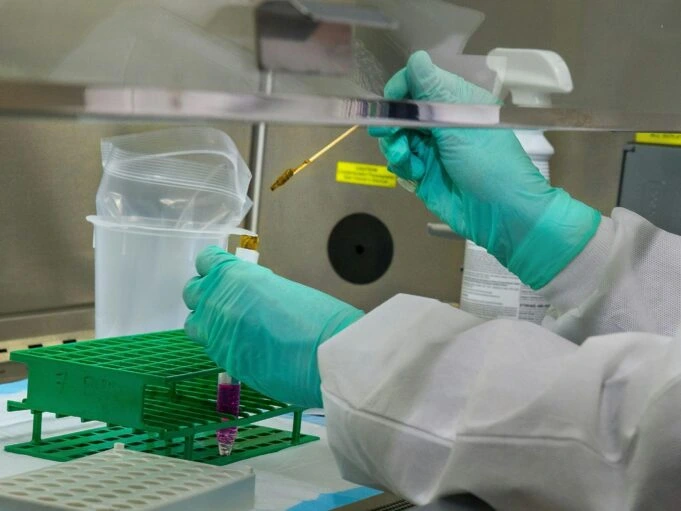Introduction
Recent advancements in urological diagnostics demonstrate how technology can revolutionize healthcare, significantly improving patient outcomes and minimizing the need for invasive procedures. These cutting-edge technologies, such as MRI (Magnetic Resonance Imaging) and ultrasound, have transformed the field of urology, offering higher precision in diagnostics while ensuring patient comfort and safety. Dr. Brian Richardson, a leading urologist, emphasizes the importance of embracing these technological innovations, which promise to enhance personalized care and improve overall treatment efficacy in the future of urology.

Urology Today: The Growing Importance of Advanced Diagnostics
Urology, the branch of medicine dedicated to diagnosing and treating disorders related to the urinary system and male reproductive organs, has witnessed immense technological progress. The role of modern diagnostic tools in this field cannot be overstated, as they enable more accurate identification of various urological conditions and guide treatment strategies.
Historically, urologists relied heavily on physical examinations and patient-reported symptoms for diagnosis. While these methods were valuable, they had their limitations, especially when faced with complex cases. Today, however, advanced diagnostic tools such as MRI and ultrasound offer more detailed and accurate visualizations of the urinary tract, enabling early detection of conditions like cancer, kidney stones, and other urinary disorders. As technology continues to advance, the role of diagnostics in urology is becoming increasingly vital in ensuring that patients receive timely and precise care.
Technological Evolution in Urological Diagnostics
The evolution of urological diagnostics from traditional methods to advanced, non-invasive technologies represents a paradigm shift in patient care. In the past, diagnostic procedures were often invasive, time-consuming, and less accurate, leaving room for potential errors or misdiagnosis. However, modern diagnostic tools like MRI and ultrasound have significantly improved the accuracy of urological assessments while reducing the need for invasive testing.
These technologies provide detailed, high-resolution images of soft tissues, organs, and bones, allowing urologists to identify conditions more accurately and make well-informed treatment decisions. By leveraging these advanced tools, specialists can offer tailored care, enhancing both the effectiveness of treatments and patients’ recovery times. Furthermore, these technologies enable the detection of diseases such as prostate cancer at earlier stages, where timely intervention can be life-saving.
The incorporation of these tools into routine practice has dramatically improved patient outcomes. The increased accuracy of imaging technologies minimizes the risks associated with traditional diagnostic techniques and ensures a more comfortable patient experience.
MRI in Urology: A Detailed Look at Its Role
MRI technology has revolutionized the diagnosis and management of urological conditions due to its ability to generate detailed images of the urinary tract and surrounding structures. MRI uses magnetic fields and radio waves to produce high-resolution images, without the need for ionizing radiation, making it a preferred choice in sensitive cases, particularly in diagnosing pelvic area diseases.
One of the main advantages of MRI is its ability to provide clear images of soft tissues and organs, including the prostate, bladder, and kidneys. This is critical in detecting tumors, obstructions, and other abnormalities that might be missed by other imaging methods. Additionally, MRI is increasingly used to guide urological procedures such as biopsies and surgeries, allowing urologists to plan and execute treatments with greater precision and safety.
The non-invasive nature of MRI, combined with its exceptional diagnostic capabilities, makes it an indispensable tool in modern urological practice. It allows for early disease detection and is also a vital resource in monitoring disease progression and treatment responses.
Ultrasound: A Key Diagnostic Tool in Urology
Ultrasound technology is another cornerstone of urological diagnostics, offering real-time imaging of the urinary tract, kidneys, and bladder. This technique uses high-frequency sound waves to create detailed internal images without the need for radiation, making it a safe and effective diagnostic option for patients of all ages.
The versatility of ultrasound allows it to be used for a variety of purposes, including detecting kidney stones, evaluating the bladder, and monitoring the progression of other urological conditions. Its non-invasive nature and the absence of radiation exposure make it particularly useful in monitoring chronic conditions or tracking treatment effectiveness.
Moreover, ultrasound is an essential tool in guiding minimally invasive procedures, such as needle biopsies and cyst aspiration, making it an integral part of urological practice. Its ability to provide immediate, actionable feedback allows urologists to make real-time adjustments to treatment plans, improving patient care and outcomes.
MRI vs. Ultrasound: Which Is Best for Specific Conditions?
The decision to use MRI or ultrasound depends on several factors, including the patient’s clinical condition, the type of diagnosis needed, and the specifics of the case. MRI is preferred when detailed soft tissue analysis is required, such as in cases of suspected prostate cancer, bladder tumors, or complex urological conditions that require high-resolution imaging.
On the other hand, ultrasound is often used for routine examinations and monitoring purposes due to its faster execution, safety profile, and lower cost. It is particularly beneficial in assessing conditions like kidney stones or urinary tract obstructions and is ideal for follow-up evaluations.
Both imaging techniques complement each other, and the choice between MRI and ultrasound is determined by the clinical situation and the diagnostic requirements. In many cases, these tools are used in tandem to provide the most comprehensive evaluation of a patient’s condition.
The Future of Urological Diagnostics: A Technological Horizon
The future of urological diagnostics is incredibly promising, with several emerging technologies set to refine diagnostic precision and enhance patient care. Artificial intelligence (AI) and machine learning are expected to play a significant role in analyzing complex medical data, providing urologists with more accurate diagnostic insights and enabling faster treatment decisions.
Additionally, advancements in imaging software, including 3D and augmented reality technologies, promise to revolutionize how urologists visualize and interact with anatomical structures. These innovations will enable even more personalized treatment approaches, as diagnostic tools become increasingly tailored to individual patient profiles.
As these technologies evolve, the goal is to make diagnostics quicker, more accurate, and less invasive, thereby improving outcomes and reducing healthcare costs. The future of urological care lies in the integration of these advanced technologies, which will help shape a new era of personalized medicine, offering better results and enhanced patient experiences.

Conclusion
Advancements in urological diagnostics have fundamentally transformed the way urologists diagnose and treat conditions related to the urinary tract and male reproductive organs. Technologies such as MRI and ultrasound have improved diagnostic accuracy, enhanced patient safety, and reduced the need for invasive procedures. As these technologies continue to evolve, they hold the potential to offer even more personalized and effective treatments, setting a new standard for patient care in urology. The future of urological diagnostics is bright, with innovations paving the way for more precise, efficient, and patient-centered care.

